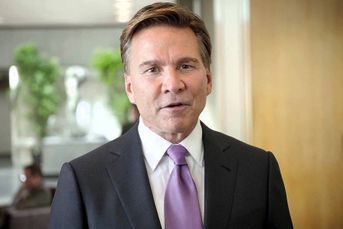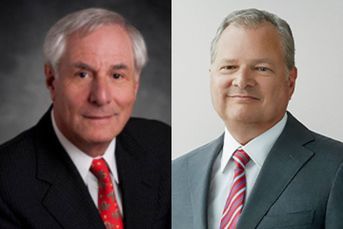Morgan Stanley sees massive growth from giant teams of advisers

Andy Saperstein expects some teams to reach $100 million in annual revenue in the future.
Morgan Stanley is betting that giant teams of advisers with up to $100 million in annual revenue will be a big driver of growth in the future.
That will occur even as the firm sees its total head count of 15,700 financial advisers and brokers dip, said Andy Saperstein, Morgan Stanley’s head of wealth management.
“Productivity is also the best measure of whether we’re achieving our tech-enabled vision for the future of wealth management,” said Mr. Saperstein, who spoke on Tuesday at the firm’s annual U.S. financials conference in New York. “Technology enables adviser teams to serve many more clients, capture a much greater share of the client’s wallet and provide an even higher quality of advice and service than they ever could before. And that creates a new paradigm.”
“I expect that the productivity of teams at this firm will increase dramatically,” he said. “It won’t be long before you see teams with production of $50 million and someday even $75 million or $100 million.”
Those giant teams would be roughly double or triple the size of a suburban typical branch office of a wirehouse firm, industry observers noted. Such offices, with dozens of advisers and brokers, on average generate $30 million to $40 million in revenue. Offices of wirehouse advisers in major cities can produce over $100 million to $150 million in annual revenue, or more.
“Now why emphasize the point of adviser productivity?” Mr. Saperstein asked. “We already have a scale advantage, but we expect to grow even if our [financial adviser] head count doesn’t grow.”
“In fact, we expect that the number of advisers might decline a bit over the next couple of years, but that’s by design,” he said. “For starters, we’re focused on maintaining the quality of our adviser base.”
Over the past couple of years, Morgan Stanley, like its competitors Merrill Lynch and UBS, has moved away from a business model that relied heavily on recruiting from competitors for growth. Such competition for advisers is expensive. Instead, Morgan Stanley and UBS are focusing on organic growth of advisers’ books of business through investments in technology.
In the future, will Morgan Stanley combine more advisers into teams to reach such high levels of production, industry observers asked. And will teams look and operate more like a stand-alone registered investment adviser?
Morgan Stanley’s focus on huge teams as part of its growth plan is a strong indicator of its overall retention and profitability strategy, said John Pierce, head of recruiting at Stifel Financial, which actively tries to recruit Morgan Stanley advisers.
“It’s all about the stickiness of assets to the large wirehouse firm,” Mr. Pierce said. “Big teams are harder to move and recruit. There’s the real risk of assets leaking if not all members of the team move to the new firm. And the bigger the team, the bigger the potential profitability.”
[More: Average production of financial advisers]
Learn more about reprints and licensing for this article.








